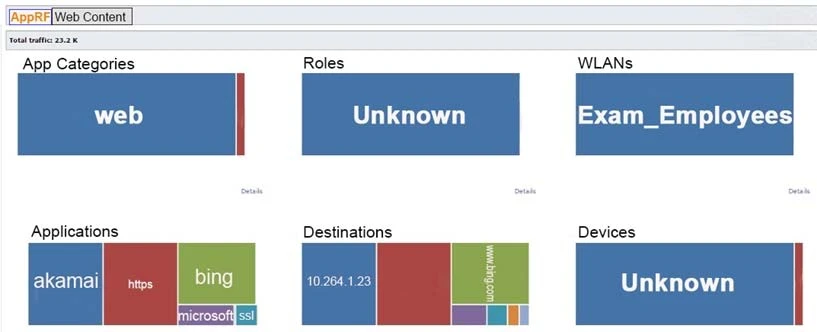
The exhibit shows output from a Mobility Master (MM) dashboard. What is a valid reason for the administrator to click the akamai square under applications?

Clicking on the akamai square under applications would allow the administrator to see the breakdown for roles, destinations, WLANs, and devices that use the application. This is useful for obtaining a detailed view of the specific entities utilizing the akamai application, which can help in further analysis and troubleshooting.
The solution must have active PEFNG licenses. In Aruba Mobility Master, the Traffic Analysis feature in the Dashboard relies on the ability to inspect and analyze network traffic, which requires Policy Enforcement Firewall Next Generation (PEFNG) licenses. These licenses enable advanced security and network management features, including traffic analysis capabilities.
Network administrators can upgrade Client Match and AirMatch separately as loadable service modules (LSMs). Loadable service modules allow for updating individual components like AirMatch without needing a full system upgrade.
Wireless security cameras operating on channels close to 6, such as channel 8, are likely to cause significant and consistent interference because Wi-Fi channels overlap. Channel 6 frequency range overlaps with channels 5 through 7, and to a lesser extent with 8, making the security camera on channel 8 a likely source of interference. Cellular phones and weather radar operate on different frequency ranges, and an AP on channel 11 is far enough apart from channel 6 to cause minimal interference.

The exhibit shows that under the Global License Pool, there is a maximum capacity of 32 for AP (Access Point) licenses, though currently, only 1 is in use (1/32). This indicates that the Mobility Master solution can support up to 32 APs in total.